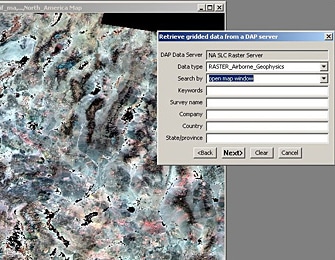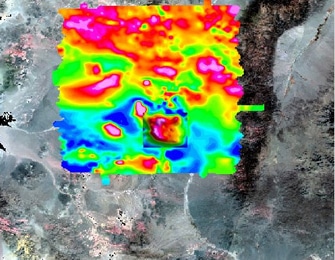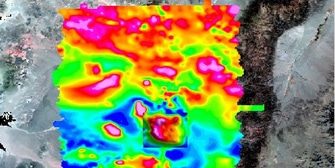It was Kennecott Exploration, a division of Rio Tinto Exploration in Salt Lake City that introduced Rio Tinto PLC to the concept of using a formal data management process to tackle the ballooning terabytes of digital information on the company’s server. Overwhelmed by the burden of organizing, reformatting and distributing geophysical data in the exploration department, it was suggested the company install Geosoft’s DAP middleware technology to boost efficiency.


“We had a big area on the file server that included hundreds of airborne and ground survey grids and no way to organize and store them other than in a file directory with little sticky notes to tell him which one was where,” says Peter Thurston, data administrator for Kennecott Exploration Company, a subsidiary of Rio Tinto.
By introducing Geosoft DAP, Rio Tinto was able to replace the sticky notes with a central server that is readily accessible to everyone in the company. Now, instead of relying on a colleague to retrieve and reformat data for them, geoscientists can access the information directly from their desktops, decreasing the time and cost of interpretation. And they don’t have to know the first thing about DAP to do it.
Thurston says the beauty of delivering information through DAP is that data can be integrated into any client application, for example MapInfo or ESRI’s ArcGIS, making the process of retrieval seamless for the end user.
But from his perspective as a data manager, the simplicity of the software is the main attraction. “It’s an intuitive process and that’s a big plus because you don’t need somebody specifically trained in IT to operate it. Once you’ve got it set up, it pretty much runs itself.”
Rio Tinto has installed DAP servers at its offices in Salt Lake City and in Bristol, England. As the company grows increasingly comfortable with the technology, it is expanding DAP beyond geophysical data to include scanned topographic and geological maps and digital maps from commercial GIS packages such as MapInfo.
“People used to spend a lot of time running around looking for stuff they couldn’t find, but now they can find it right away because it’s all coming from one place,” says Thurston. “That has improved out effectiveness. It’s a one-stop shop.”
As part of its data management strategy, Rio Tinto is evaluating its data repository requirements, and plans to centralize storage of its historical exploration data – including drill hole logs and assay results. Having a central system with a secure server will ensure that data is not lost, corrupted or stolen, regular occurrences when digital information is stored on individual hard drives and CDs. Another advantage is that data semantics and formats can be standardized to ease interpretation.
Implementing these data repositories is a daunting task for one of the world’s oldest and largest mining companies. As middleware, Geosoft’s DAP can help to connect data users with these back-end data repositories, providing access through one single interface.
The DAP web interface was recently implemented to make company data more accessible to users accustomed to accessing and gathering data from the internet. “Our geoscientists frequently visit online government surveys to download data, and we wanted to provide a similar experience through DAP. With the web interface, they can download data from DAP, just like they would from any other online site,” says Thurston.
For a company as big and widespread as Rio Tinto, improved data management is expected to have a significant impact on the value of exploration data. Geologists exploring for diamonds in North America, for instance, will have access – at the click of a mouse – to all the geochemical and geophysical data that Rio Tinto has collected during previous diamond exploration campaigns in other parts of the world. This fresh perspective could be the trigger that leads to new target areas or discoveries.





